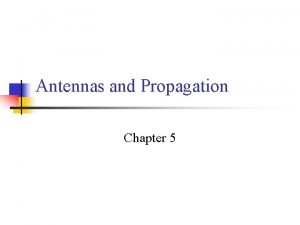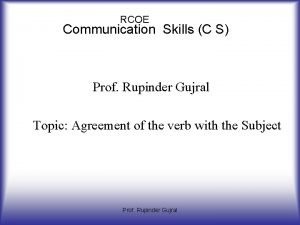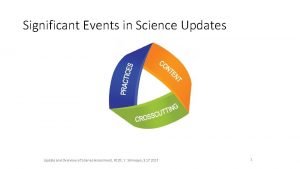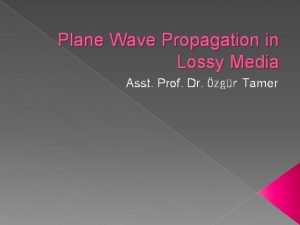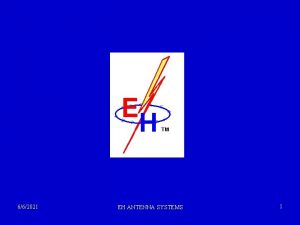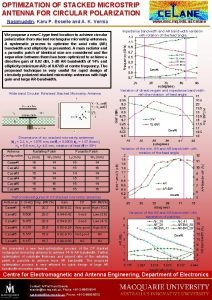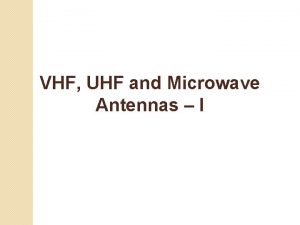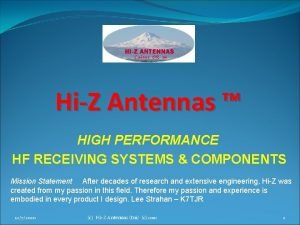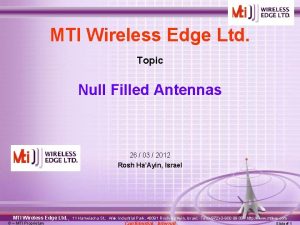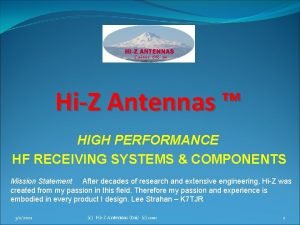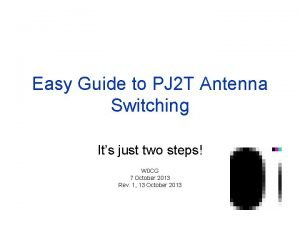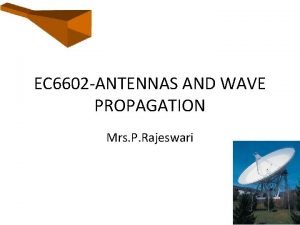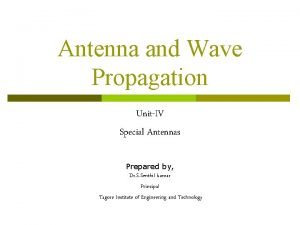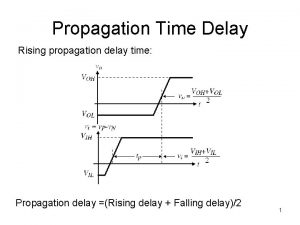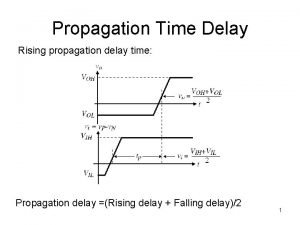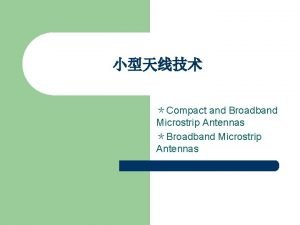Antennas Wave Propagation Prof S Sadasivam 1 RCOE












- Slides: 12

Antennas & Wave Propagation Prof. S. Sadasivam. 1 RCOE Prof S Sadasivam ANtennas & Wave Propagation.

An antenna is an electrical conductor or system of conductors Transmission – radiates electromagnetic energy into space Reception - collects electromagnetic energy from space In two-way communication, the same antenna can be used for transmission and reception 2 RCOE Prof S Sadasivam ANtennas & Wave Propagation.

Radiation pattern Graphical representation of radiation properties of an antenna Depicted as two-dimensional cross section Beam width (or half-power beam width) Measure of directivity of antenna Reception pattern Receiving antenna’s equivalent to radiation pattern 3 RCOE Prof S Sadasivam ANtennas & Wave Propagation.

Isotropic antenna (idealized) Radiates power equally in all directions Dipole antennas Half-wave dipole antenna (or Hertz antenna) Quarter-wave vertical antenna (or Marconi antenna) Parabolic Reflective Antenna 4 RCOE Prof S Sadasivam ANtennas & Wave Propagation.

Antenna gain Power output, in a particular direction, compared to that produced in any direction by a perfect omnidirectional antenna (isotropic antenna) Effective area Related to physical size and shape of antenna 5 RCOE Prof S Sadasivam ANtennas & Wave Propagation.

Antenna Gain & Effective Area. Relationship between antenna gain and effective area G = antenna gain Ae = effective area f = carrier frequency c = speed of light (» 3 ´ 108 m/s) = carrier wavelength 6 RCOE Prof S Sadasivam ANtennas & Wave Propagation.

Ground-wave propagation Sky-wave propagation Line-of-sight propagation 7 RCOE Prof S Sadasivam ANtennas & Wave Propagation.

Ground Wave Propagation: Follows contour of the earth Can Propagate considerable distances Frequencies up to 2 MHz Example AM radio 8 RCOE Prof S Sadasivam ANtennas & Wave Propagation.

9 RCOE Prof S Sadasivam ANtennas & Wave Propagation.

Sky wave propagation: Signal reflected from ionized layer of atmosphere back down to earth Signal can travel a number of hops, back and forth between ionosphere and earth’s surface Reflection effect caused by refraction Examples Amateur radio CB radio 10 RCOE Prof S Sadasivam ANtennas & Wave Propagation.

11 RCOE Prof S Sadasivam ANtennas & Wave Propagation.

Multipath Propagation: Reflection - occurs when signal encounters a surface that is large relative to the wavelength of the signal Diffraction - occurs at the edge of an impenetrable body that is large compared to wavelength of radio wave Scattering – occurs when incoming signal hits an object whose size in the order of the wavelength of the signal or less 12 RCOE Prof S Sadasivam ANtennas & Wave Propagation.
